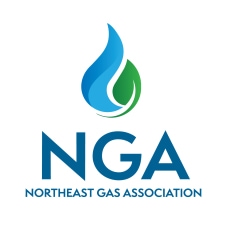Hydrogen
Among the energy sources seen as potentially significant for helping establish a low-carbon energy future is hydrogen. For natural gas systems, hydrogen has the potential to reduce carbon intensity through blending into existing gas pipeline systems.
Future of Hydrogen
In November 2020, the U.S. Department of Energy released its "Hydrogen Program Plan."
Its overview of hydrogen and its energy applicability includes the following:
"Hydrogen is the most abundant element in the universe; however, it is rarely found in its elemental form on Earth. It must be produced from a hydrogen-containing feedstock (e.g., water, biomass, fossil fuels, or waste materials) using an energy source. Once hydrogen is produced, it can be used to store, move, and deliver low- or no-carbon energy to where it is needed. Hydrogen can be stored as a liquid, gas, or chemical compound, and is converted to energy via traditional combustion methods (in engines, furnaces, or gas turbines), through electrochemical processes (in fuel cells), and through hybrid approaches such as integrated combined cycle gasification and fuel cell systems.
It is also used as a feedstock or fuel in a number of industries, including petroleum refining, ammonia production, food and pharmaceutical production, and metals manufacturing. Hydrogen can be produced in large centralized production facilities or in smaller distributed production facilities, and can be transported via truck, pipeline, tanker, or other means. Hydrogen, as a versatile energy carrier and chemical feedstock, offers advantages that unite all of our nation's energy resources-renewables, nuclear, and fossil fuels-and enables innovations in energy production and end uses that can help decarbonize three of the most energy intensive sectors of our economy: transportation, electricity generation, and manufacturing."
The Canada Energy Regulator notes there are three methods to produce hydrogen:
- "Grey hydrogen uses an industrial process called 'steam methane reforming', which uses high temperature steam to separate hydrogen from methane-the main component of natural gas.
- Blue hydrogen uses the same method as grey hydrogen, except it captures and stores the carbon dioxide (CO2) emissions resulting from the process.
- Green hydrogen utilizes renewable electricity and a process called electrolysis (passing an electric current through water) to separate and extract hydrogen molecules from water."
Hydrogen is currently used in the transportation sector as a vehicle fuel, notably in California. There are a few hydrogen fueling stations in the Northeast region, but fueling infrastructure is generally limited to date.
The 2020 DOE report summarizes the challenges as well: "The key technical challenges for hydrogen and related technologies are cost, durability, reliability, and performance, as well as the lack of hydrogen infrastructure. To achieve widespread commercialization, hydrogen utilization technologies must enter larger markets and be able to compete with incumbent technologies in terms of life-cycle cost, performance, durability, and environmental impact. Non-technical barriers also need to be addressed, such as developing and harmonizing codes and standards, fostering best practices for safety, and developing a robust supply chain and workforce."
In a June 2021 "Market Snapshot" paper on hydrogen, the Canada Energy Regulator summarized the hydrogen opportunity this way:
"Hydrogen has the potential to play a key role in the transition to a low-carbon economy and net-zero emissions. It may provide a way to leverage some existing energy and infrastructure, including fossil fuel resources and natural gas pipelines. Yet, work is still needed for hydrogen to be deployed at mass scale, including to increase cost-competitiveness with other fuels. Globally, efforts are focused on developing and harmonizing regulations, standards, and codes and addressing hydrogen storage and transportation challenges."
In September 2022, U.S. DOE released a draft report entitled: "DOE National Clean Hydrogen Strategy and Roadmap." The report "provides a snapshot of hydrogen production, transport, storage, and use in the United States today and explores the potential for clean hydrogen to contribute to national goals across multiple sectors." While focusing on "clean hydrogen," DOE notes it is looking to support "opportunities for hydrogen production from diverse energy, including fossil fuels with CCS. Opportunities include regions of the U.S. with abundant natural gas, reservoirs for CO2 storage, or existing natural gas supply infrastructure."
Finally, GTI Energy has a well-established Hydrogen Technology Center; please see below for the link to its informative website.
For Further Information:
- U.S. Department of Energy, "Hydrogen Program Plan," Nov. 2020 Link to: https://www.hydrogen.energy.gov/pdfs/hydrogen-program-plan-2020.pdf
- Canada Energy Regulator, "How hydrogen has the potential to reduce the CO2 emissions of natural gas," Sept. 2020 Link to: https://www.cer-rec.gc.ca/en/data-analysis/energy-markets/market-snapshots/2020/market-snapshot-hydrogen-potential.html
- GTI: Hydrogen Technology Center Link to: https://www.gti.energy/hydrogen-technology-center/
- U.S. Department of Energy, draft "National Clean Hydrogen Strategy and Roadmap," Sept. 2022 Link to: https://www.hydrogen.energy.gov/pdfs/clean-hydrogen-strategy-roadmap.pdf

